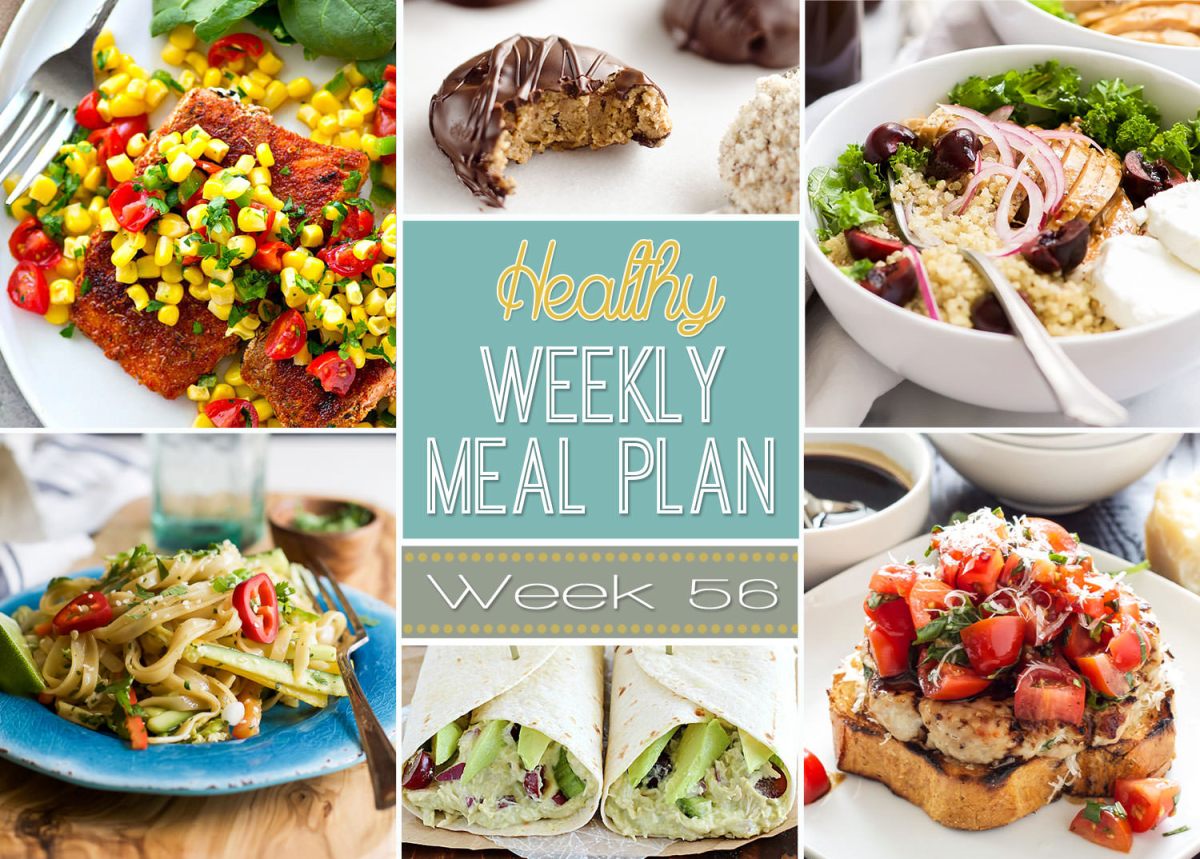Embark on a culinary journey free from soy! This guide unveils the secrets to crafting a delicious and nutritious soy-free meal plan for an entire week. Imagine vibrant, colorful dishes bursting with flavor, meticulously planned to fit your schedule and dietary needs. We’ll explore the nuances of soy-free eating, from understanding potential nutritional gaps to discovering exciting protein alternatives and mastering efficient meal prep techniques. Prepare to ditch the soy and embrace a week of satisfying, healthy meals.
We’ll equip you with practical strategies, including sample meal plans, easy-to-follow soy-free recipes with vivid step-by-step instructions and mouthwatering descriptions, and tips for overcoming common challenges. Learn to transform everyday meals into soy-free masterpieces, making healthy eating not just achievable but enjoyable.
Weekly Meal Planning Strategies
Crafting a successful soy-free meal plan requires a strategic approach that balances nutritional needs with time constraints and personal preferences. Effective planning ensures you eat well, avoid food waste, and minimize last-minute meal decisions. This section details practical strategies to simplify the process and create a delicious, soy-free week of meals.
Sample Weekly Soy-Free Meal Plan
A well-balanced meal plan incorporates a variety of foods from all food groups, ensuring you receive a wide range of essential nutrients. The following sample plan provides a framework, adaptable to your specific dietary needs and tastes. Remember to adjust portion sizes to match your individual caloric requirements.
| Day | Breakfast | Lunch | Dinner |
|---|---|---|---|
| Monday | Oatmeal with berries and nuts | Quinoa salad with roasted vegetables and chickpeas | Baked salmon with asparagus and sweet potato |
| Tuesday | Scrambled eggs with spinach and whole-wheat toast | Leftover baked salmon and vegetables | Chicken stir-fry with brown rice and a variety of colorful vegetables (broccoli, carrots, peppers) |
| Wednesday | Greek yogurt with fruit and granola (ensure soy-free granola) | Large salad with grilled chicken or tofu (ensure soy-free) and a light vinaigrette | Lentil soup with a side of whole-wheat bread |
| Thursday | Smoothie with banana, spinach, and almond milk | Leftover lentil soup | Beef and vegetable skewers with a side of couscous |
| Friday | Whole-wheat pancakes with maple syrup and fruit | Tuna salad sandwich on whole-wheat bread (ensure soy-free mayonnaise) | Homemade pizza with dairy-free cheese and various vegetable toppings |
| Saturday | Breakfast burrito with eggs, potatoes, and salsa | Leftover pizza | Roasted chicken with roasted root vegetables (carrots, parsnips, potatoes) |
| Sunday | Omelet with mushrooms and cheese | Salad with leftover roasted chicken and vegetables | Shepherd’s pie with a sweet potato topping |
Efficient Meal Planning Techniques
Streamlining the meal planning process involves implementing time-saving techniques. Grocery shopping lists and batch cooking are particularly effective methods for maximizing efficiency and minimizing stress.
Creating a detailed grocery list directly from your meal plan prevents impulse purchases and ensures you have all the necessary ingredients. Categorize your list by grocery store sections (produce, dairy, meat, etc.) to further expedite your shopping trip. Visualize a vibrant, organized list: crisp lines separating each item, neatly categorized sections, and a color-coded system to easily identify items you already have versus those you need to buy.
Batch cooking involves preparing large quantities of ingredients or entire meals in advance. For example, roast a large batch of vegetables on Sunday to use throughout the week in salads, stir-fries, or as a side dish. Imagine a large roasting pan overflowing with colorful, perfectly roasted vegetables – carrots, broccoli, peppers, and zucchini, glistening with olive oil and herbs. This simple act dramatically reduces cooking time during the week.
Step-by-Step Weekly Meal Plan Organization
Organizing a weekly meal plan involves a structured approach that considers various factors, ensuring a realistic and enjoyable experience.
- Assess Time Constraints: Consider your available time for grocery shopping and meal preparation. A realistic plan accounts for busy days and allows for flexibility.
- Identify Dietary Preferences and Restrictions: Note any allergies, intolerances, or preferred cuisines. The soy-free requirement is a key element in this stage. Consider using a colorful chart to visualize your preferences and restrictions.
- Choose Recipes: Select soy-free recipes that align with your preferences and time constraints. Prioritize recipes that use similar ingredients to minimize waste and maximize efficiency. Imagine browsing through a cookbook filled with vibrant images of delicious, soy-free meals, each recipe carefully selected to fit your needs.
- Create a Shopping List: Compile a comprehensive grocery list based on the selected recipes. Organize the list by grocery store sections for efficient shopping. Picture a neatly organized list, a perfect roadmap for your shopping expedition.
- Schedule Meal Preparation: Allocate specific times for grocery shopping, meal preparation, and cooking. Consider batch cooking methods to save time. Envision a well-structured schedule, a clear plan for conquering the week’s culinary challenges.
- Prepare and Enjoy: Follow your plan, adjusting as needed. Remember to enjoy the process and savor your delicious, healthy, soy-free meals.
Soy-Free Recipe Ideas

Embarking on a soy-free diet doesn’t mean sacrificing delicious and satisfying meals. With a little creativity and these recipe ideas, you can enjoy a week of flavorful, soy-free cuisine. These recipes are designed to be easily adaptable, offering substitutions for common soy-based ingredients. Remember to always check ingredient labels to ensure products are soy-free.
Soy-free cooking involves understanding common soy-based ingredients and their effective replacements. Many processed foods contain hidden soy, so careful label reading is crucial. This section provides five unique recipes and illustrates how to successfully adapt existing recipes for a soy-free lifestyle.
Five Soy-Free Recipes
These five recipes showcase the versatility of soy-free cooking, offering a variety of flavors and textures to satisfy any palate. Each recipe provides detailed instructions and highlights potential substitutions for soy-based ingredients. Note that these are just starting points; feel free to adjust seasonings and ingredients to your liking.
- Lemon Herb Roasted Chicken and Vegetables:
- Ingredients: 1 whole chicken (about 4 pounds), 1 lemon (sliced), 2 sprigs fresh rosemary, 2 sprigs fresh thyme, 1 pound carrots (chopped), 1 pound potatoes (chopped), 2 tablespoons olive oil, salt and pepper to taste.
- Instructions:
- Preheat oven to 400°F (200°C).
- Place chicken in a roasting pan. Stuff lemon slices and herbs inside the cavity.
- Toss carrots and potatoes with olive oil, salt, and pepper.
- Arrange vegetables around the chicken.
- Roast for 1 hour and 15 minutes, or until chicken is cooked through and vegetables are tender.
- Coconut Curry Chickpea Stew:
- Ingredients: 1 tablespoon coconut oil, 1 onion (chopped), 2 cloves garlic (minced), 1 inch ginger (grated), 1 teaspoon curry powder, 1/2 teaspoon turmeric, 1/4 teaspoon cumin, 1 (14.5 ounce) can diced tomatoes, 1 (15 ounce) can chickpeas (drained and rinsed), 1 (13.5 ounce) can full-fat coconut milk, salt and pepper to taste.
- Instructions:
- Heat coconut oil in a large pot over medium heat.
- Sauté onion, garlic, and ginger until softened.
- Stir in curry powder, turmeric, and cumin; cook for 1 minute.
- Add diced tomatoes, chickpeas, and coconut milk. Bring to a simmer.
- Reduce heat and simmer for 20 minutes, or until flavors have melded.
- Season with salt and pepper to taste.
- Quinoa Salad with Roasted Sweet Potatoes and Black Beans:
- Ingredients: 1 cup quinoa (rinsed), 2 cups water, 1 large sweet potato (cubed), 1 tablespoon olive oil, 1 (15 ounce) can black beans (drained and rinsed), 1/2 cup chopped red onion, 1/4 cup chopped cilantro, 2 tablespoons lime juice, salt and pepper to taste.
- Instructions:
- Preheat oven to 400°F (200°C).
- Toss sweet potato with olive oil, salt, and pepper; roast for 20-25 minutes, or until tender.
- Meanwhile, cook quinoa according to package directions.
- Combine cooked quinoa, roasted sweet potato, black beans, red onion, and cilantro in a large bowl.
- Drizzle with lime juice and season with salt and pepper to taste.
- Beef and Broccoli Stir-Fry (Soy-Free):
- Ingredients: 1 pound beef sirloin (thinly sliced), 2 tablespoons tamari (gluten-free), 1 tablespoon cornstarch, 1 tablespoon sesame oil, 1 head broccoli (cut into florets), 1 red bell pepper (sliced), 1/2 cup beef broth, 2 cloves garlic (minced), 1 tablespoon ginger (minced).
- Instructions:
- Marinate beef in tamari and cornstarch for at least 30 minutes.
- Heat sesame oil in a wok or large skillet over high heat.
- Stir-fry beef until browned.
- Add broccoli, bell pepper, garlic, and ginger; stir-fry for 5 minutes.
- Pour in beef broth and bring to a simmer.
- Cook until vegetables are tender-crisp.
- Lentil Soup:
- Ingredients: 1 cup brown or green lentils (rinsed), 4 cups vegetable broth, 1 onion (chopped), 2 carrots (chopped), 2 celery stalks (chopped), 2 cloves garlic (minced), 1 teaspoon dried oregano, 1/2 teaspoon dried thyme, salt and pepper to taste.
- Instructions:
- Combine all ingredients in a large pot.
- Bring to a boil, then reduce heat and simmer for 30-40 minutes, or until lentils are tender.
- Season with salt and pepper to taste.
Adapting Existing Recipes to Be Soy-Free
Many recipes can be easily adapted to be soy-free by making simple substitutions. The key is to identify soy-based ingredients and replace them with suitable alternatives. Common soy-based ingredients include soy sauce, soy milk, and textured vegetable protein (TVP).
For example, tamari (a gluten-free soy sauce alternative) can replace soy sauce in stir-fries and marinades. Coconut milk, almond milk, or other non-dairy milks can substitute for soy milk in baking and beverages. For TVP, consider using lentils, chickpeas, or mushrooms as protein alternatives.
Common Soy Substitutions
Several readily available ingredients can effectively replace soy in cooking. This table summarizes some common substitutions and their applications.
| Soy Ingredient | Soy-Free Substitution | Application |
|---|---|---|
| Soy Sauce | Tamari (gluten-free), coconut aminos | Marinades, stir-fries, sauces |
| Soy Milk | Almond milk, coconut milk, oat milk | Baking, smoothies, coffee |
| Textured Vegetable Protein (TVP) | Lentils, chickpeas, mushrooms, crumbled tofu (if not strictly avoiding all soy products) | Meat substitutes, soups, stews |
| Soy Lecithin | Sunflower lecithin | Baking, emulsifying agent |
Recipe Creation and Step-by-Step Guides
Crafting delicious and nutritious soy-free meals requires careful attention to ingredient selection and cooking techniques. This section provides detailed, step-by-step guides for three popular dishes, highlighting the visual aspects of each stage to enhance your understanding and cooking experience.
Soy-Free Vegetable Stir-Fry
This vibrant stir-fry is packed with colorful vegetables and a flavorful, soy-free sauce. The recipe is quick, easy, and adaptable to your preferred vegetables.
- Prepare the Vegetables: Imagine a colorful array: bright orange carrots, sliced into thin half-moons; deep green broccoli florets, separated; vibrant red bell peppers, thinly sliced; and crisp, snow-white onions, cut into wedges. The textures vary – the carrots are firm, the broccoli slightly crunchy, the peppers tender, and the onions have a delicate crispness.
- Stir-Fry the Vegetables: Heat a tablespoon of coconut oil in a large wok or skillet over medium-high heat. The oil shimmers, almost translucent. Add the onions and carrots first, their colors standing out against the dark pan. Stir-fry for about 3-4 minutes, until the onions soften slightly and the carrots begin to tenderize. Next, add the broccoli and bell peppers; the pan is now a kaleidoscope of colors. Stir-fry for another 5-7 minutes, until the vegetables are tender-crisp. The vegetables retain their vibrant hues and a slight crunch.
- Make the Sauce: In a small bowl, whisk together 2 tablespoons of rice vinegar, 1 tablespoon of maple syrup, 1 tablespoon of sesame oil, 1 teaspoon of grated ginger, and 1/2 teaspoon of garlic powder. The sauce is a rich amber color, slightly viscous and aromatic.
- Combine and Serve: Pour the sauce over the vegetables and toss to coat. The sauce clings to the vegetables, glazing them with a glossy sheen. Serve immediately over brown rice or quinoa. The finished dish is a colorful and flavorful explosion, a delightful mix of textures and tastes.
Soy-Free Lentil Soup
This hearty and nutritious lentil soup is a comforting and flavorful meal, perfect for a chilly evening. The colors and textures evolve throughout the cooking process, creating a visually appealing and delicious result.
- Sauté Aromatics: Finely chop one onion, two carrots, and two celery stalks. The onions are a pale yellow, the carrots a vibrant orange, and the celery a pale green. Sauté these in a large pot with olive oil until softened. The onions become translucent, the carrots slightly softened, and the celery loses some of its crispness. The mixture takes on a warm, golden hue.
- Add Lentils and Broth: Add one cup of brown or green lentils (their earthy brown or deep green color contrasts beautifully with the sautéed vegetables), 6 cups of vegetable broth (a clear, pale yellow liquid), and 4 cups of water. The mixture becomes a rich, murky broth with flecks of lentil color visible.
- Simmer: Bring the mixture to a boil, then reduce heat and simmer for 30-40 minutes, or until the lentils are tender. The lentils soften and their color deepens. The broth thickens slightly, taking on a more unified, earthy tone.
- Season and Serve: Season with salt, pepper, and herbs such as thyme or rosemary. A splash of lemon juice adds brightness. The final soup is a hearty, rustic looking dish with a variety of textures – tender lentils, softened vegetables, and a flavorful broth.
Soy-Free Creamy Tomato Pasta
This pasta dish offers a creamy, flavorful sauce without relying on soy-based ingredients. The vibrant colors and textures create a visually appealing and satisfying meal.
- Cook Pasta: Cook your favorite pasta according to package directions. The pasta, initially a pale yellow or white, transforms into a slightly translucent, al dente consistency.
- Prepare Sauce: While the pasta cooks, sauté garlic in olive oil until fragrant. Add a can of crushed tomatoes (a deep red, slightly chunky sauce), a splash of heavy cream (a rich, pale white cream), and fresh basil (bright green leaves). Simmer until slightly thickened. The sauce becomes a richer, smoother consistency, a vibrant red enhanced by the green basil.
- Combine and Serve: Drain the pasta and add it to the sauce, tossing to coat. The pasta absorbs the sauce, taking on a beautiful reddish hue. Garnish with extra basil and grated Parmesan cheese (a pale yellow, granular cheese). The final dish is a visually appealing combination of textures and colors, creamy and flavorful.
Mastering a soy-free diet doesn’t have to be daunting. By following the strategies and recipes Artikeld in this guide, you’ll confidently navigate a week of delicious and nutritious soy-free meals. From vibrant stir-fries to hearty lentil soups and satisfying pasta dishes, you’ll discover a world of flavor and culinary creativity. Remember, planning is key, and with a little preparation, you can enjoy a week of success, savoring every bite of your soy-free culinary adventure. Embrace the challenge, and enjoy the delicious results!
Questions Often Asked
What are some common soy substitutes?
Excellent soy substitutes include tofu alternatives like tempeh or seitan, chickpeas, lentils, quinoa, and various nuts and seeds.
How do I ensure I’m getting enough protein on a soy-free diet?
Focus on incorporating a variety of protein sources such as lean meats, poultry, fish, eggs, beans, lentils, quinoa, and nuts and seeds. A balanced approach ensures adequate protein intake.
Can I still eat out while following a soy-free diet?
Yes, but careful planning is essential. Call ahead to restaurants and inquire about soy-free options or ingredients. Be prepared to explain your dietary needs clearly.
What if I accidentally consume soy?
Reactions to soy vary. Mild reactions might include digestive upset. Severe reactions are less common but require immediate medical attention. Always read food labels carefully.


